Well, here it is! The post where I tell you guys what materials and curriculum we are using for first grade (with an excited preschooler tagging a long!) We have dropped things I was just sure we would love, while picking up some unexpected additions. Our plan has been ever-evolving, as we follow the natural rhythms of life and learning.
We ended up really liking our charter school, which I was skeptical about at the start of the year. The key to having it work for us was a flexible teacher who let me take the reigns. Since I can choose all of our curriculum, the documentation is a trade-off I have been willing to make for the $2600 budget we get for books and materials.
Only my first grade daughter is officially enrolled with the charter school, but my preschooler has been voluntarily schooling right along with us in every subject except for math. (Which she could do, but I’m not ready to teach two kids math yet.) My older girl is my creative, non-traditional learner, while the younger one is going to be my classic by-the-book student.
If I could recap what curriculum we used this year, I’d simply say it was an assortment of great books. (I pulled them from various book lists which I link to below!) Here is what we’ve been up to!
MATH
I was super unmotivated about teaching this subject because you know, math triggers me and takes me to traumatic events in my past where everyone is doing long division and I’m staring at the green linoleum floor trying not to cry. I wanted something interactive, manipulative, and game-based, especially since my daughter’s love language is quality time.
I chose Right Start Math. It is Montessori-inspired so there are a lot of parts and pieces, which intimidated me at first. I really wish I had learned math this way and I’m pretty embarrassed to admit how many light-bulb moments I have had teaching first grade math! The trade-off is the prep and lesson planning, but I haven’t died yet.
The guide is very scripted and tells me exactly what to do in a simple/clean visual layout. I really like that it is multi sensory, so that if my daughter doesn’t understand a verbal explanation (and she doesn’t a lot of the time), I can show her with the hands-on materials. With two next year, I doubt I will use this particular curriculum since it requires so much of my one-on-one attention, but we have really enjoyed it this year.

LANGUAGE ARTS
My girl is going to be a later reader than many; in fact, she isn’t reading at all yet and she will be seven in May. Reading is a life-long skill that is absolutely essential to her future, and I’m just not willing to ruin the wonder to meet someone else’s standards. I want her to own the process. We are still doing work in this area, but it is a grade level or so down from her peers….which she will never need to know. Our charter school teacher recommended the Explode the Code Workbooks, which has been the perfect solution for us. We started with the earliest possible book, which goes over letter sounds and formation, one letter at a time. We are doing nothing more than single letter letter sounds right now. My preschool age daughter is very verbal and loves to write, so both of my girls are doing these books together.
Writing is perhaps the area in which I’ve seen the most improvement this year. In the Charlotte Mason method, a laundry list of language arts skills are covered simply by “copy work.” That is, literally copying passages of well-written stories or poetry every day. We have done this many different ways; at times just practicing letters on slates, other times writing cards and letters to family. With this approach I can allow her to have creative choices on how she wants to do her writing. I want her to think of writing as a powerful creative, communicative process, instead of a rote, dry exercise. (The Draw Write Now series is a fun way to incorporate drawing and copy work together, which both of my girls really love.)
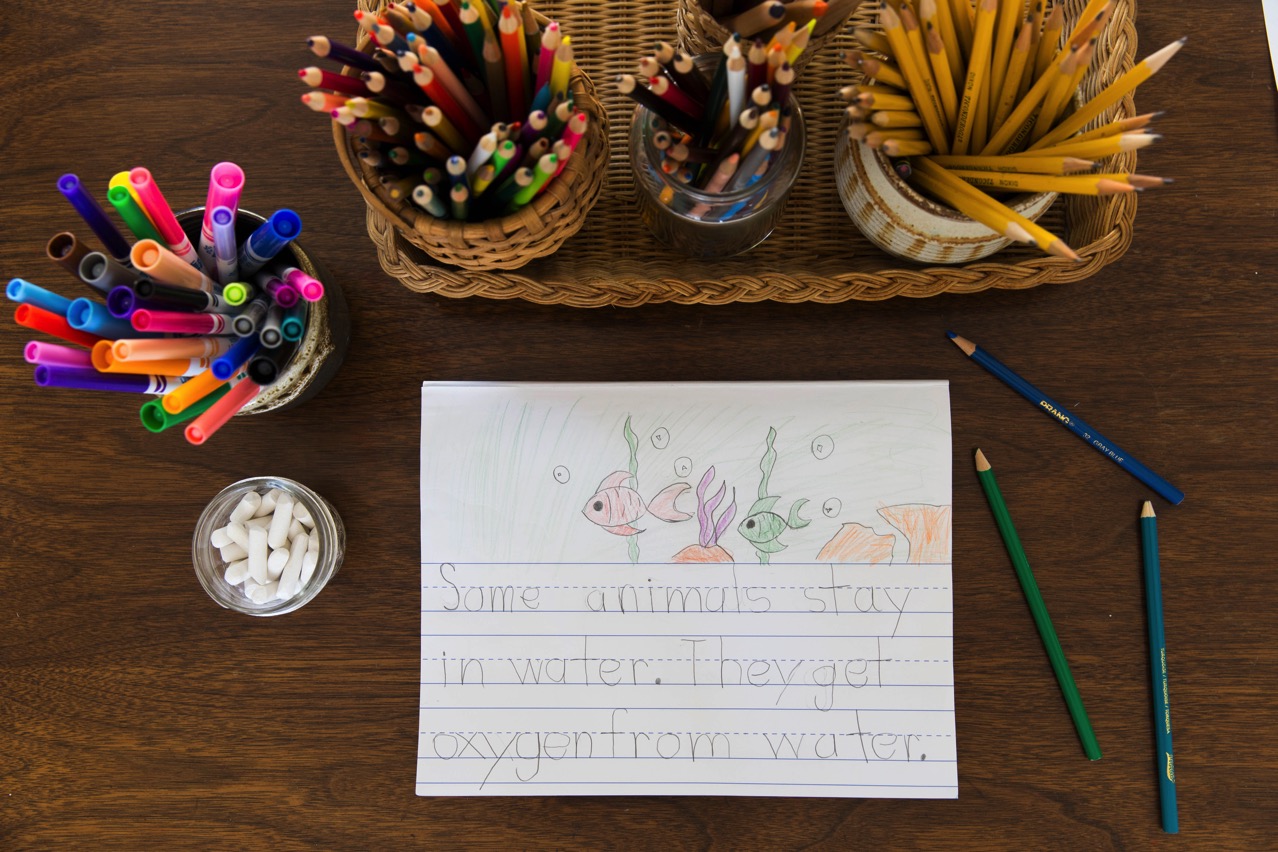
LITERATURE/HISTORY/GEOGRAPHY
For Bible we are memorizing scripture (I like to do longer passages that we build on progressively) and reading a daily story out of our Egermeier’s Storybook Bible. We also read a page every day from a children’s theology book called The Ology. My kids really love this, especially the Bible stories with the illustrations.
We are doing a “literature-based” approach to school, meaning we do not use textbooks. Instead, we use “living books” (real books, stories, and novels) read aloud to the child. This is a staple of the Charlotte Mason philosophy and one of my favorite things about the way we are doing school. There are really no workbooks, activities or tests in these subjects. In a nutshell, exposure to great books and developing a love of learning is more important than dry facts. The child is required only to orally “narrate” back what was read. I really like the Charlotte Mason approach for literature and history. I got my first grade booklist from the free Charlotte Mason curriculum Ambleside Online. Though the books are all children’s classics, the language is far above what I ever believed my girls could comprehend. I sometimes have to explain things, but their comprehension and attention span has risen considerably over the past few months.
Ambleside was honestly a little dry for us, so I added some books from Beautiful Feet and Sonlight’s curriculum (they give you access to their book lists for free) instead of Ambleside.
A note for the OCD ones: At first, I really wanted to plan out our reading schedule to the T. (Of course, I did.) Let me be the first to tell you that for the homeschool philosophy we use, there is literally no point in this! Now that I have done it, I will never try to do it again. The real point of all the reading aloud is to lay a feast of ideas for the mind. The other goal is that over time their ears become attuned to things like cadence, vocabulary, and complex sentence structures.
Next year I’ll simply compile a list of living books for each subject and let it be. I did a lot of planning this year which really helped me get a grid for pacing when starting out, but about halfway through I got a feel for what we were doing and didn’t need it anymore. With real books, unfortunately, there’s just no linear progression through subjects like there would be with a textbook. Each book is a different style and length, with varying chapter sizes. Random a much better reflection of how we naturally learn.
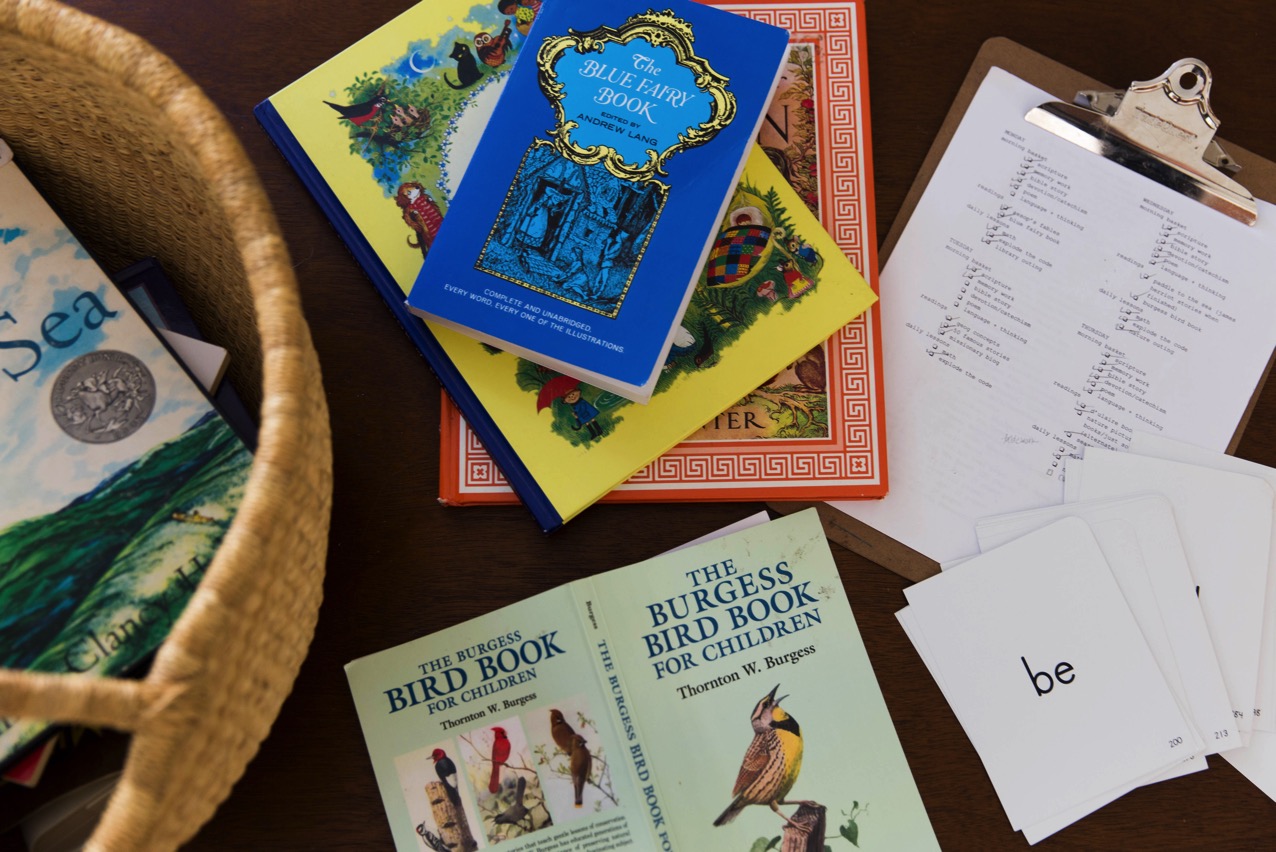
SCIENCE
I was really struggling with getting a handle on this subject, until I embraced my unschooling side. I am letting the girls lead by their interest, with no particular agenda. It’s not the organized, linear thing I had in mind, but it’s working beautifully. The key to unschooling is being willing to expose a child to new ideas and facilitate interests with books, time, and materials. In other words, science is no longer a subject I worry about checking off a list, but something that just happens through the course of our week. It has been a delight. Personally I love it and think that science is the ideal subject for unschooling!
I had planned to do the classic Charlotte Mason method of nature journaling for science, but we didn’t end up liking it. The things my daughter wants to learn about are not easily observed in nature; at least not in our immediate locale. (Volcanoes, earthquakes, sharks, ocean life).
Most surprisingly, my kids are literally glued to books that give them dry, straight facts about their science questions. Our best learning tool for science has turned out to be children’s non-fiction section of the library! Every few weeks I ask my daughter what she wants to learn about and then I do some research and reserve the recommended books. Often, we just go into the children’s non fiction section and start pulling things that look interesting!
I also set up little hands-on projects or experiments every couple of weeks or so, like the bird habitat we are putting in our back yard. (They may or may not be related to what we are reading.) Somehow, the learning opportunities come, and the connections get made without me having to control every step.
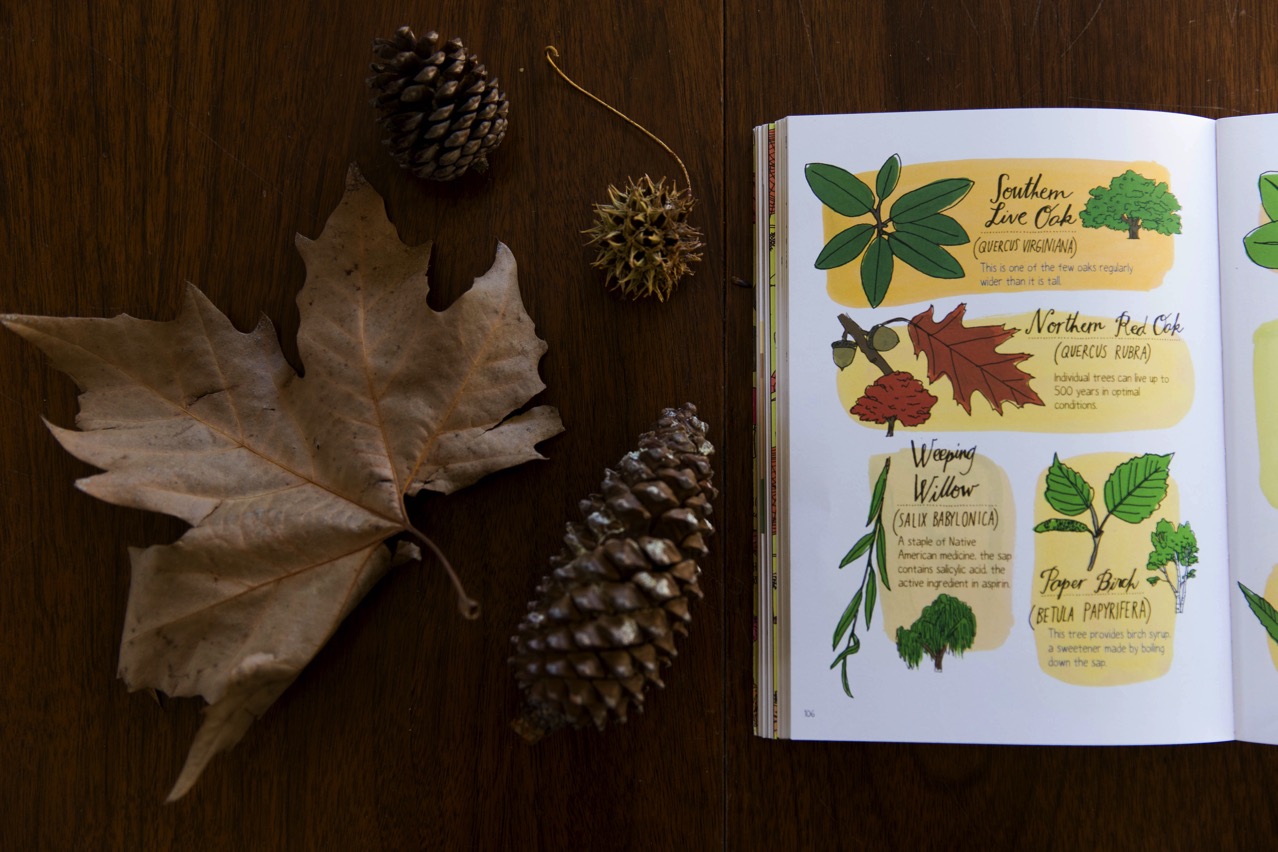
PLAY/DISCOVERY
This year we’ve worked hard to create an environment at home that intentionally fosters play and open-ended discovery. My girls’ favorite play includes legos (they are LEGO MANIACS), outdoor play (riding bikes or in the mud kitchen), and art…lots of art! I consider this creative, child-led time “school.” Most of their afternoons are spent at the dining room table making a creative disaster of some sort or another. The fruit that has really come out of this time has been an interest in STEM. My daughter has been attempting to construct simple machines in her free time, which is something I never would have known she wanted to do if it hadn’t been for our free afternoons!
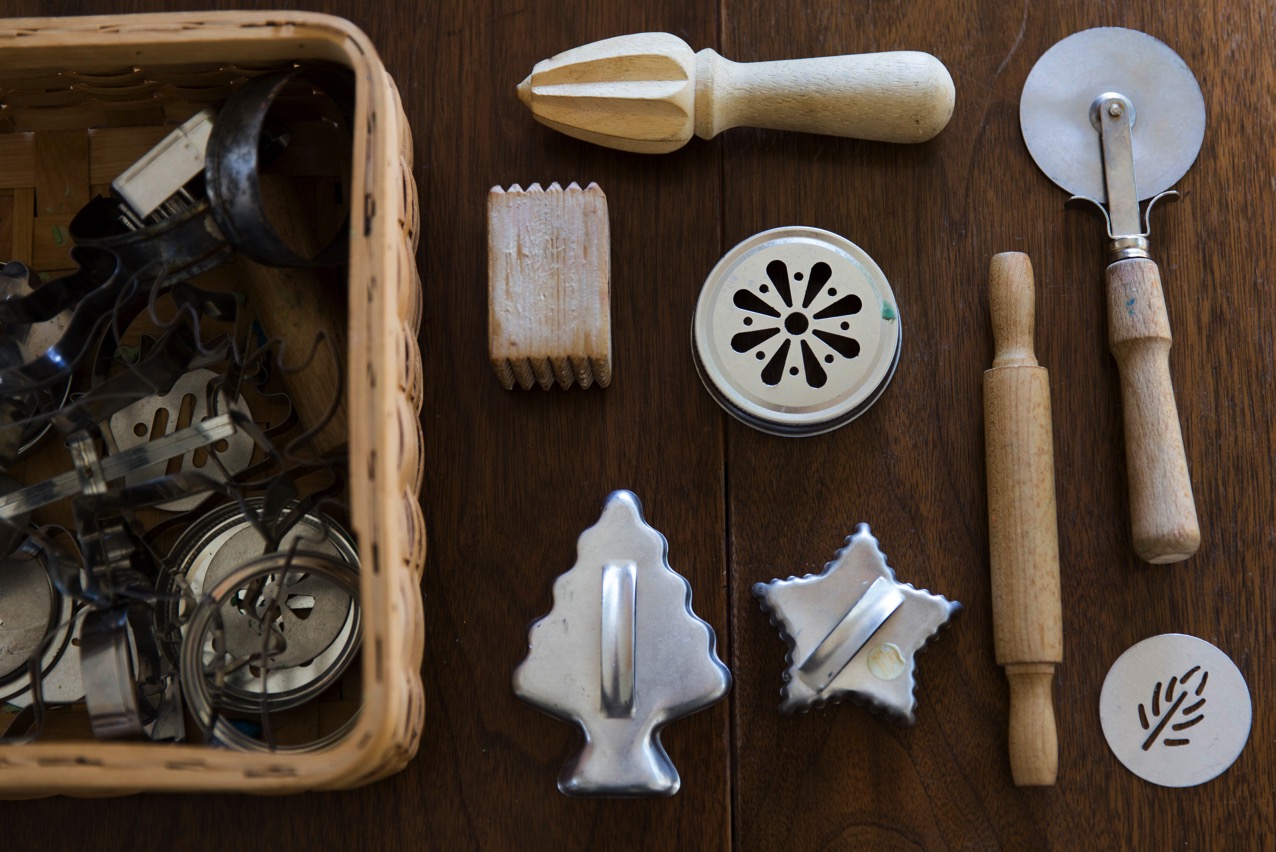
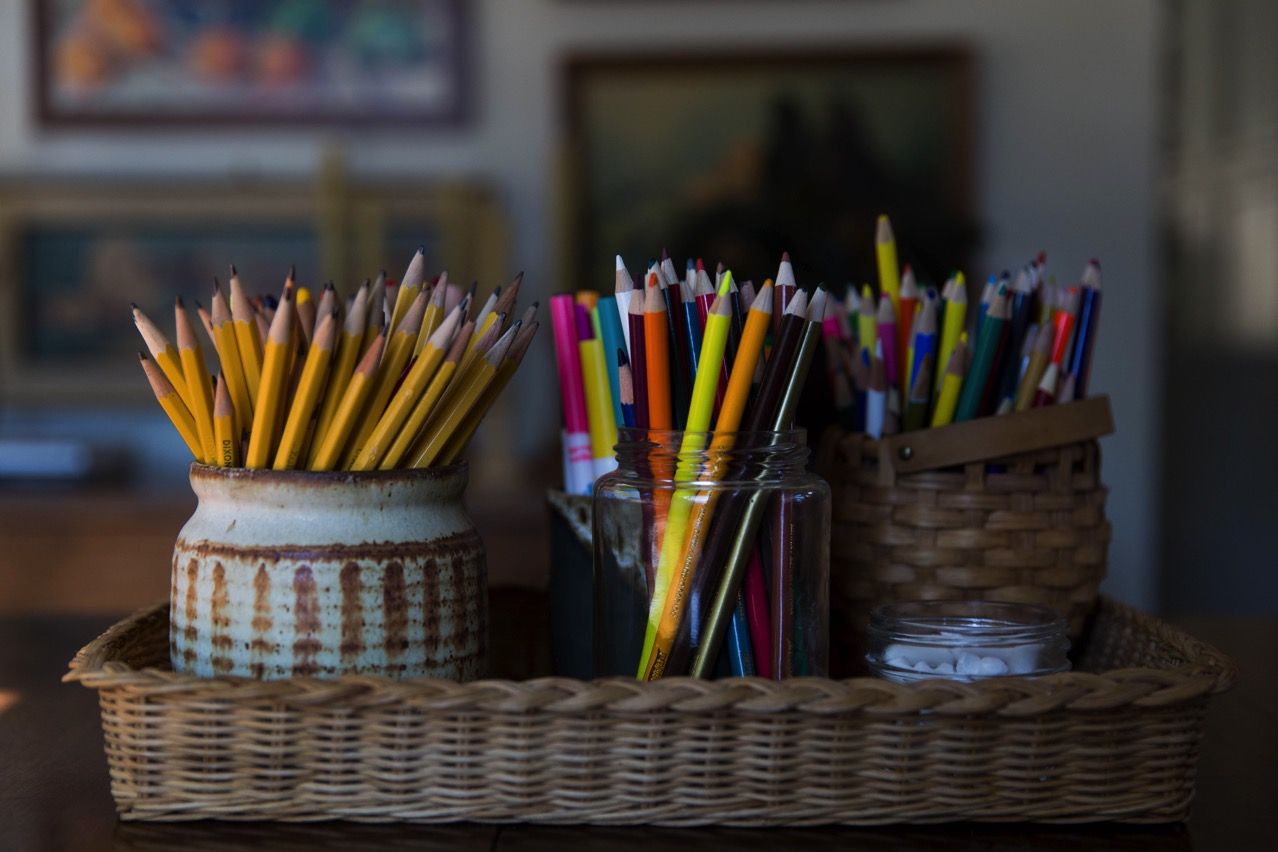
Notes
This post was written early in our homeschool journey. This particular year was key, since helped me discover that I liked combining interest-led and Charlotte Mason ideas.
Unschooling is our main philosophy (more about that here), but we utilize some Charlotte Mason principles to enrich our home and equip our kids to self-educate.
Each year I choose a literature-based curriculum or book list along with one math and one language arts program. From about September to about March, we do short lessons, projects and read alouds with these curriculums. The remainder of our time is spent on interest-led learning. I plan our year without a calendar or planner using a simple homeschool planning schema.
- Here’s how we structure our day, and here’s how we approach learning to read.
- If you liked this post you can find all seven of our homeschool year recaps chronicled here.
- For more homeschool encouragement, ideas and resources, sign up for my newsletter, The Lounge.
PRIMARY RESOURCES USED THIS YEAR:
Memoria Press Phonics Flash Cards
Assortment of great books selected from Ambleside Online Year 1 , Sonlight and Beautiful Feet lists
Are you looking for more? If you’ve been thinking about home school or are in the midst of doing it and are needing someone to pull back the curtain of mystery and throw the lights on a little, my friend Kate and I teamed up to write a homeschool starter guide just for YOU!
In it we give you an overview of a Charlotte Mason education as well as all the practicals: the legal and administrative, curriculum recommendations and ideas of how to structure you day. It consolidates the best of the best resources…it is THE resource that I hand out to all new homeschoolers! It’s especially designed to be a Charlotte Mason primer for families will children ages 5-8.
You can purchase and download it here as a PDF or as an e-book for any e-reader (phone included!)
For more candid thoughts on faith, motherhood and homeschooling, subscribe to my Substack newsletter!